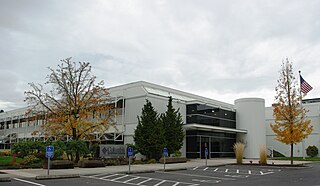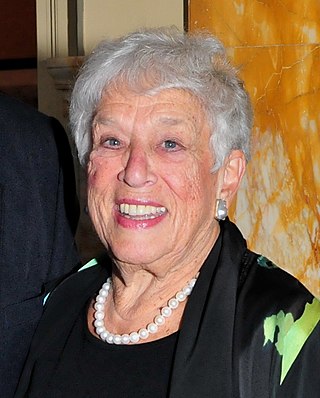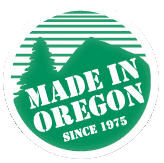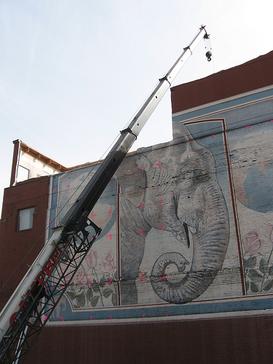
Clackamas County is one of the 36 counties in the U.S. state of Oregon. As of the 2020 census, the population was 421,401, making it Oregon's third-most populous county. Its county seat is Oregon City. The county was named after the native people living in the area at the time of the coming of Europeans, the Clackamas people, who are part of the Chinookan peoples.
Ernest Heinrich Wemme (1861–1914) was a German businessman and philanthropist who came to prominence in Portland, in the U.S. state of Oregon. He was an active business investor during the pioneering era of automobiles and aviation.

The Portland Art Museum (PAM) is an art museum in downtown Portland, Oregon, United States. The Portland Art Museum has 240,000 square feet, with more than 112,000 square feet of gallery space. The museum’s permanent collection has over 42,000 works of art. PAM features a center for Native American art, a center for Northwest art, a center for modern and contemporary art, permanent exhibitions of Asian art, and an outdoor public sculpture garden. The Northwest Film Center is also a component of Portland Art Museum.

The Columbia Sportswear Company is an American company that manufactures and distributes outerwear, sportswear, and footwear, as well as headgear, camping equipment, ski apparel, and outerwear accessories.
Fred Meyer is an American chain of hypermarket superstores founded in 1922 in Portland, Oregon, United States, by Fred G. Meyer. The stores operate in the northwest U.S., with locations in Oregon, Washington, Idaho, and Alaska. The company was acquired by Kroger in 1998, though the stores are still branded Fred Meyer. The chain was one of the first in the United States to promote one-stop shopping, eventually combining a complete grocery supermarket with a drugstore, bank, clothing, jewelry, home decor, home improvement, garden, electronics, restaurant, shoes, sporting goods, and toys. The Fred Meyer division is headquartered in Portland.
Catalina is a brand of women's swimwear. It was once one of the oldest clothing manufacturers in California. Their history began in 1907, as Bentz Knitting Mills, a small manufacturer of underwear and sweaters. The name was changed to Pacific Knitting Mills in 1912, accompanied by the introduction of swimwear to their existing knit lines. The name was changed again finally to Catalina in 1928.
Fred G. Meyer was an American businessman who founded the Oregon-based Fred Meyer store chain, which had 63 stores in four western states at the time of his death. He was known for successfully introducing several innovative marketing concepts.

The Warnaco Group, Inc. was an American textile/clothing corporation which designed, sourced, marketed, licensed, and distributed a wide range of underwear, sportswear, and swimwear worldwide. Its products were sold under several brand names including Calvin Klein, Speedo, Chaps, Warner's, and Olga.

Gertrude Boyle was a German-born American businesswoman in the U.S. state of Oregon. After her family fled Nazi Germany, her father founded the business that became Columbia Sportswear, where in 1970, she became company president. She remained president until 1988 and additionally, was chairwoman of the company's board of directors from 1983 until her death in 2019. Starting in the 1980s, she appeared in a series of advertisements for Columbia Sportswear with her son, Timothy Boyle, often humorously testing the quality and durability of their products. She was also a philanthropist and memoirist.
A white stag is a white stag or white deer.

Made in Oregon is a private company founded in Portland, Oregon, United States in 1975 by Portland businessman Sam Naito. The company is a gift retailer that specializes in Oregon-made products. It was originally owned by Norcrest China Company, an import business co-owned by Sam Naito and his brother Bill Naito, until Norcrest was reorganized as H. Naito Corporation in 1992.
Norm Thompson Outfitters was a privately owned catalog and internet retailer based in Middleton, Massachusetts that was previously based in Hillsboro, Oregon, United States until September 2016. The Norm Thompson offices were closed and consolidated due to Bluestem's acquisition of their parent company, Orchard Brands, in July 2015. Founded in 1949 by Norman A. (Norm) Thompson as a mail order business, it grew to annual sales of $200 million before it was sold to Golden Gate Capital Partners in 2006. The company sells clothing, gadgets, furniture, kitchen items, and gift items from its namesake catalog as well as from its Solutions and Sahalie brands. John Difrancesco serves as president and chief executive of the 500 employee company.

The White Stag sign, also known as the "Portland Oregon" sign, is a lighted neon-and-incandescent-bulb sign located atop the White Stag Building, at 70 NW Couch Street in downtown Portland, Oregon, United States, facing the Burnside Bridge. The sign faces westbound traffic as it enters downtown Portland coming across the Willamette River. The sign was acquired by the City of Portland in September 2010, and the lettering was changed to read "Portland Oregon" in November 2010.

The Jacob Kamm House, also called the Jacob Kamm Mansion, is a French Second Empire style mansion in Portland, Oregon, built in 1871. It was moved from its original location on SW 14th and Main to its current location in Goose Hollow in 1950 to make room for Lincoln High School's campus. It was purchased by preservationist Eric Ladd for $1,000 at auction and moved to its present location, along with two other houses Ladd was interested in preserving, at SW 20th and Jefferson, which was called "the colony."

William Sumio Naito was an American businessman, civic leader and philanthropist in Portland, Oregon, U.S. He was an enthusiastic advocate for investment in downtown Portland, both private and public, and is widely credited for helping to reverse a decline in the area in the 1970s through acquiring and renovating derelict or aging buildings and encouraging others to invest in downtown and the central city.

The Holt–Saylor–Liberto House is a house located in southwest Portland, Oregon, that is listed on the National Register of Historic Places. It was added to the register in 1978. Earlier, it was designated a Portland Historic Landmark by the city's Historic Landmarks Commission, in October 1977.
Timothy P. Boyle is an American billionaire, and the president and CEO of Columbia Sportswear.

Mary's Club is the oldest strip club in Portland, Oregon, and among the oldest in the United States. In 1954, Roy Keller bought the business from Mary Duerst Hemming, who owned and operated Mary's as a piano bar beginning in the 1930s. Keller initially hired go-go dancers as entertainment during the piano player's breaks, later hiring them full-time because of their popularity. Topless dancers wearing pasties were introduced in 1955. The club also featured comics, musicians, singers and other acts. All-nude dancing began in 1985, after a judicial ruling against City of Portland ordinances banning it in venues which served alcohol.

The Packy mural was a public artwork depicting the elephant Packy, painted on the Skidmore Fountain Building in Portland, Oregon's Old Town Chinatown neighborhood. The artwork was designed by Eric Larsen and painted in 1990 by North Pacific Sign and Design, but was destroyed during the building's 2008 renovation to become the new headquarters for Mercy Corps.

The "Portland" sign is displayed on the exterior of Portland, Oregon's Arlene Schnitzer Concert Hall, in the United States.














